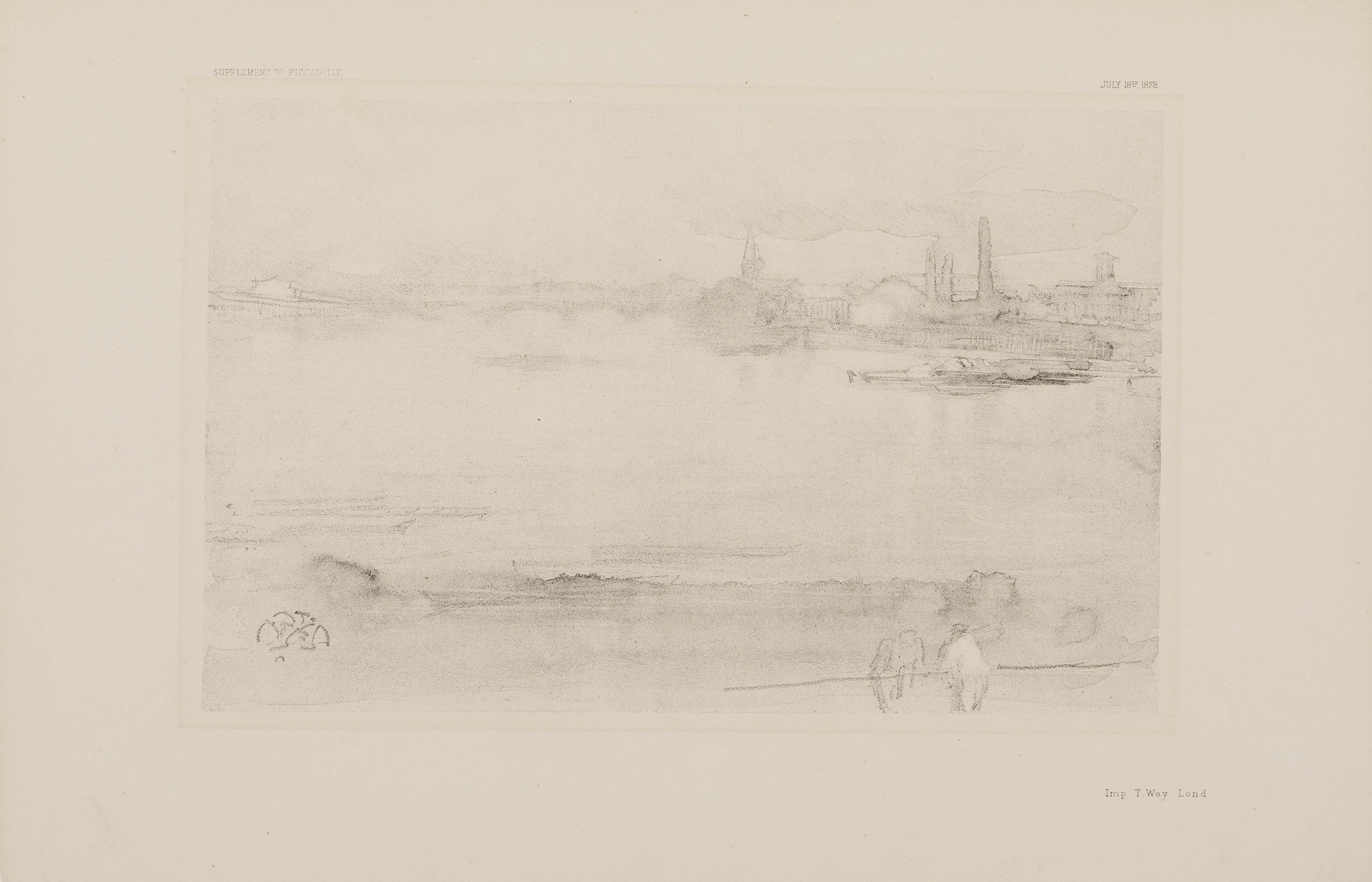
|
|
Early Morning
Way 7, Spink, Stratis and
Tedeschi 9
wash lithotint,
1878, on
medium-weight cream wove paper, a very fine impression
of the fourth state (of 4), printed in black, with full margins*,
with letters, very slight lightstaining from an old mat opening, two
lower corners scuffed with slight paper loss, hinges on the upper margin, verso, otherwise in quite excellent condition

P. 165x259 (197x259mm. with letters), S. 255x381mm.
|
The image is a
view of Battersea from the Chelsea side of the Thames, a view Whistler
knew well from the windows of both houses he had occupied on Lindsey
Row since 1863. He represented it regularly as of 1859 and well into
the nocturnes of the 1870s, such as the lithotint Nocturne, a companion piece to Early Morning, which he published
in the spring of 1878 (cf. the Metropolitan Museum's impression at
https://www.metmuseum.org/art/collection/search/337702).
The present lithotint
had a rather involved printing history that may usefully be related
here...
Whistler suffered ongoing financial difficulties that year, which led him to
agree to publishing a series of prints in Picadilly: Town and Country Life,
a weekly magazine that had just been launched by a good friend,
Theodore Watts-Dunton. Publication of the series was intended to
increase the number of subscriptions while supplying the artist with
additional income.
Firstly,
Whistler then had little experience in the technical aspects of
lithography, and he spent more time than expected in preparation,
scraping and etching the stone meticulously in four successive
states to get the exact tonal effects he was seeking. The first
state was much too dark, "nocturnal", the next two presented several
other problems, and Thomas R. Way (1903, 1905) wrote
that Whistler reworked the stone "until the perfect silvery quality was
attained".
In short, as Spink, Stratis and Tedeschi (1998) note "Although the full edition of Early Morning had been printed for the July 18 issue, Piccadilly
failed financially after the publication of the July 11 issue. Fifty
impressions were selected from the edition and the rest destroyed when
the magazine failed."
They further specify that "many impressions
have been trimmed to remove the legend." The present impression may therefore be considered to be rather rare.
According to
Way, in conclusion, it is "an exquisitely delicate drawing . . .
the greatest triumph of all his litho-tints."
* The Spink, Stratis & Tedeschi catalogue gives full sheet measurements as 260x380mm.


